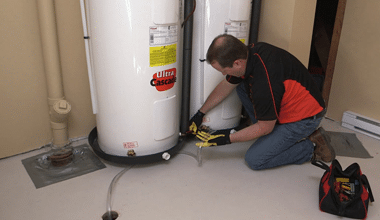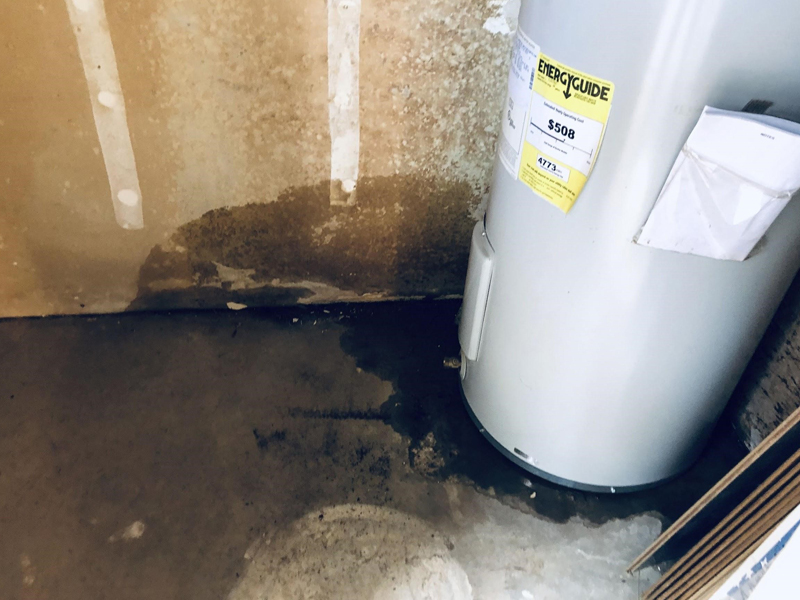Important Steps Homeowners Should Follow While Addressing Malfunctioning Heating Units
Important Steps Homeowners Should Follow While Addressing Malfunctioning Heating Units
Blog Article
Listed here down the page you'll find a lot of helpful expertise all about Water Heater Repair.

Whether it is situated in the basement or a different space, damaged water heating units can create anxiety. Having no hot water supply is additionally bothersome.
Turn Off Power Source
Before calling the plumber, closed off a gas water heater by transforming the temperature level dial. This will certainly protect against electrocution, particularly if there is a leakage as water is a conductor. Generally, the heating element closes off when the water hits a specific temperature level.
Cut Off the Cold Water Supply
Cut off the tanks touch water supply from the source. When your storage tank is in great problem, the cold water quits filling up when the container is complete. If you can not locate it or reach it, you should turn off that main water supply line outside your residential or commercial property.
Call the Plumber
After doing the initial two safety steps, you need to call your plumber ahead right now to take care of a fractured hot water heater. Keep in mind that your system will certainly not simply conk out substantially overnight. There are typically indications that your aging hot water heater has sediment build-up in the inside. Take note of the following:
Rather, as quickly as you detect these indicators, have actually an expert come to examine your water heater thank. Typically, water heating systems have a life-span of concerning 8 to 12 years.
Clean Up Residential or commercial property
After calling the plumber, file damage by taking notes and also photos so you can declare your house owner's insurance coverage. Get rid of any kind of standing water to avoid mold and also mold growth. If you have a completely submersible water pump, use that to drain pipes the water.
Bear in mind, if you discover any type of concerns with your water heating unit, call the pros right away. You can not take this trouble gently because a defective thermostat can raise water temperature to an alarmingly high level, leading to unintentional burns.
Whether it is situated in the cellar or a separate space, broken water heating systems can create stress and anxiety. Before calling the plumber, shut off a gas water heater by turning the temperature level dial. After doing the very first 2 safety actions, you must call your plumber to come right away to repair a ruptured water heating system. If you have a completely submersible water pump, utilize that to drain pipes the water. Remember, if you notice any type of problems with your water heating system, call the pros right away.
8 REASONS YOUR HOT WATER HEATER IS NOT WORKING & HOW TO FIX
Water Heater Problems & Solutions
Loose or Damaged In-Line Valve
Unlike a water leak near the bottom of your water tank, a water leak on top of your system can be easily fixed. A common cause of water tank leaks includes a loose in-line valve. This is a handle that is located at the top of the water tank that is engineered to activate or deactivate the flow of water. To fix this problem, you will need to secure the nut that holds the ball or in-line valve in its location. If the leak becomes more severe once it is tightened, you will be required to travel to your local hardware store to purchase a new in-line valve for your water heater.
Damaged Pressure Relief Valve
Most types of water heaters are equipped with a pressure relief valve that is engineered to discharge pressure from the water tank when it becomes too high. If this valve on top of your water heater begins to leak, we recommend purchasing a new one online or from your local store. The process of removing and replacing pressure relief valves is not complicated.
No Warm Water
If you have an electric water heater in your home, the most typical cause of a lack of warm water is a broken heating element. Your water heater is equipped with two heating elements that are tasked with heating incoming water in the water tank. Once a heating element begins to malfunction, you will have little to no hot water to use for showering, cleaning, and laundry.
Low Supply of Hot Water
Are you continuously running out of warm water? This issue may be a byproduct of a cracked dip tube. This tube is engineered to push cold water to the base of your water tank to be heated. Once a crack or hole begins to form in the dip tube, the incoming supply of cold water may be released near the top or middle of your tank. As a result, the cold water on top of the tank will be sent to the faucets and showers in your house. This hot water heater problem can only be fixed by replacing the dip tube on your system. Since the process of installing a new dip tube is complex, we recommend calling a certified technician for help.
A low supply of warm water may also be a signal of excess sediment buildup in your water tank. As your water heater reaches the middle of its life cycle, minerals in water including magnesium and calcium will begin to collect at the base of the water tank. As the minerals continue to grow, there will be less room in the water tank to store hot water. To resolve this problem, flush your water heater to remove the excess minerals.
Water is Too Warm or Cold
If the water in your shower feels uncomfortable hot or cold, you can adjust the temperature of your water by changing the settings on your thermostat. Setting the temperature to 120 degrees Fahrenheit may help you save money on your utility bills. This is an excellent temperature to use if you’re worried about scalding or skin irritation. Does this temperature feel too cold? You may also adjust the thermostat to 140 degrees Fahrenheit to make your showers more pleasant. If your hot water heater is not working when you change the temperature, this is an indicator of a broken thermostat. Immediately find a certified plumbing or heating contractor in your area to repair or replace your thermostat.
Low Water Pressure
Low water pressure is not always caused by a malfunctioning water heater. If you live in an older home with smaller water pipes, the flow of water will be restricted prior to reaching our kitchen or bathroom skins. The only way to eliminate this hot water heater problem is to connect new ¾-inch water lines to your system. Another type of problem that may negatively impact your water pressure includes calcium deposits in water pipes.
As magnesium and calcium begin to form in your pipes, the diameter of your water lines will become smaller. As a result, the warm water from your water heater will not be able to travel in an efficient manner to your sinks or appliances. Since the process of replacing water pipes includes removing drywall, an average homeowner that does not have a plumbing license will not be able to fix this hot water heater problem.
https://www.wmhendersoninc.com/blog/8-reasons-your-water-heater-is-not-working-how-to-fix/

I have been very curious about Maintaining & Draining a Water Heater and I am praying you appreciated our page. Loved our review? Please share it. Help others locate it. Bless you for your time. Please check up our site back soon.
Immediate response? Click here. Report this page